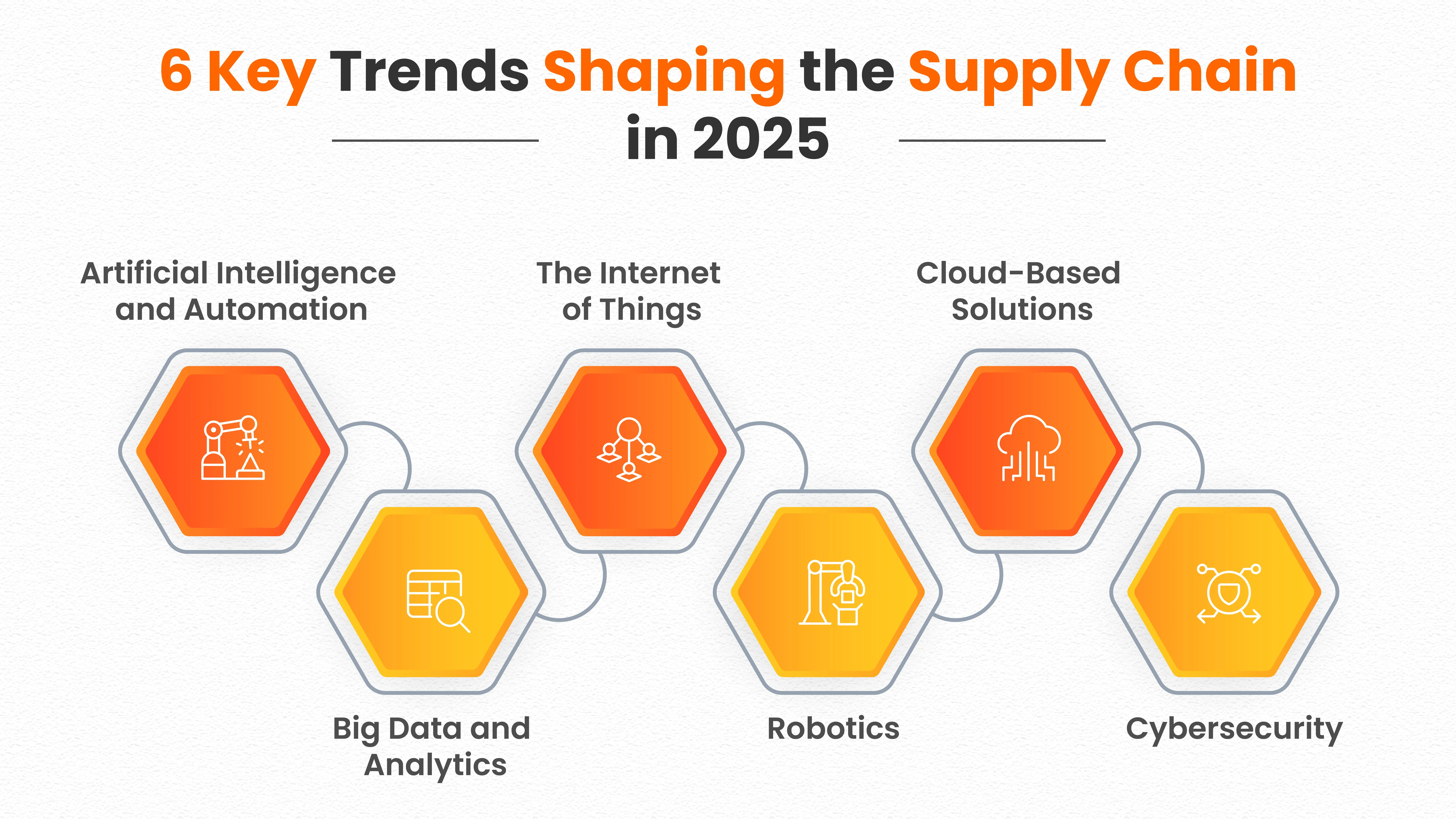
The Future of Supply Chain is being redefined by technology, evolving customer needs, and global challenges. Supply chain management today is not just about moving goods—it’s about speed, flexibility, and resilience.

As supply chain expert Charles Poirier said, “Supply chains are no longer chains but networks that must operate in unison to survive.” This blog explores the top technologies and trends shaping the Future of Supply Chain and how businesses can adapt to stay competitive.
Yes. Technology now drives every business function, including supply chain operations. Soon, AI in Supply Chain, automation, Big Data, and IoT will become standard tools for boosting efficiency, accuracy, and decision-making.
IDC Research predicts global spending on digital supply chain technologies will exceed $19 billion annually by 2025.
Let’s look at the top trends shaping this transformation.

AI in Supply Chain is changing how businesses forecast demand, manage risks, and automate routine tasks.
This shift ensures faster, more accurate, and data-driven workflows.
IoT connects devices across the supply chain to enable real-time monitoring and control.
By 2025, over 75 billion IoT devices will enhance visibility across supply chain operations—resulting in smarter, more responsive warehouses.
Cloud computing simplifies collaboration and ensures real-time updates across teams and regions.
By 2025, nearly 60% of supply chains will rely on cloud-based systems for faster response to supply and demand changes.
Massive data generation demands better insights. Predictive analytics will help:
The result: lower costs, higher productivity, and smarter decisions.
Robotics is automating warehouse and factory tasks.
By 2025, robots will manage over 20% of warehouse tasks, reducing labor costs and improving accuracy.
With more connected systems, data security is critical.Companies must invest in strong cybersecurity strategies to protect data, avoid disruptions, and maintain customer trust.
Modern supply chains thrive on collaboration.
Stronger partnerships between suppliers, manufacturers, and distributors lead to resilient supply chain operations capable of handling disruptions.
The pandemic exposed global vulnerabilities. To stay resilient:
These steps minimize risks and improve flexibility during market uncertainty.
The Future of Supply Chain will depend on complete visibility across operations. Blockchain and IoT offer real-time tracking and data sharing, enhancing transparency from production to delivery.
Economic uncertainty and market demand push companies to launch new products faster.
According to McKinsey, companies that accelerate NPI can boost revenue by up to 40%.
How to Achieve This:
Consumers now expect personalized products.
Businesses must adopt flexible production and adaptive logistics to meet custom orders without delays.
Sustainability is key to the Future of Supply Chain. A circular model encourages recycling, reusing, and repurposing materials.This approach reduces waste, supports eco-friendly goals, and builds brand trust.
By 2025, supply chains will be:
Together, these advancements create an agile and efficient global network that defines the Future of Supply Chain.
Leadership will play a major role in adopting new technologies.
A visionary strategy will ensure competitiveness in the evolving supply chain ecosystem.
Mobility is a game-changer. A mobile SCM solution empowers teams to manage logistics, track shipments, and control inventory anytime, anywhere.
With mobile SCM solutions like Propel Apps’:
Propel Apps’ mobile SCM solution integrates with Oracle EBS, Oracle SCM Cloud, and SAP S/4 HANA—making real-time barcode inventory data available across devices.
This improves decision-making and collaboration while strengthening supply chain operations.
Schedule a free demo to explore how mobility can transform your organization’s supply chain.
The Future of Supply Chain is bright, driven by innovation in AI, IoT, automation, and mobility. Organizations that embrace these changes and invest in AI in Supply Chain, warehouse inventory control, and mobile SCM solutions will lead the way.
With the right strategy and technology, your business can turn supply chain transformation into a lasting competitive advantage.
